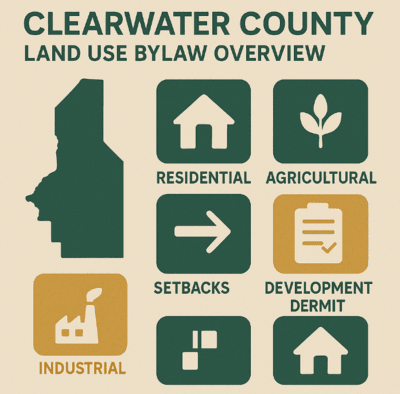Overview of Clearwater County Land Use Bylaw
The Clearwater County Land Use Bylaw Draft 4 provides essential guidelines for land use, development, and zoning within the county. It includes regulations for agricultural, residential, commercial, and industrial zones, along with specific rules for setbacks, development processes, and permits. Compliance with these guidelines ensures orderly and sustainable development in Clearwater County.
Key Zoning Districts in Clearwater County
- Agricultural (A) District: Primarily for farming and agricultural operations.
- Country Residential (CR) District: Designed for residential development on larger parcels of land.
- Hamlet Residential (HR) District: Areas designated for residential development within small hamlets or communities.
- Commercial (C) District: Areas designated for commercial and business activities.
- Industrial (I) District: Suitable for industrial activities including manufacturing and warehousing.
- Direct Control Districts: Specific areas where the County has additional control over development to meet community objectives.
Property Line Setbacks
Setbacks regulate the distance between structures and property lines to maintain safety, privacy, and aesthetics. Typical setbacks in Clearwater County include:
- Residential Buildings: 7.6 meters (25 feet) from the front and rear yard; 3 meters (10 feet) from the side yard.
- Accessory Buildings: Reduced setbacks, such as 1.5 meters (5 feet) from side and rear property lines, depending on the zoning district.
Check your property’s specific zoning district for exact setback regulations.
Development Permit Process
To start any new development or significant changes to your property, a Development Permit must be obtained. This ensures your project complies with the County’s bylaws and zoning rules.
Steps to Apply for a Development Permit:
- Identify the zoning district of your property.
- Review allowable uses and requirements for your proposed project.
- Submit your application to the Planning & Development Department, including required documentation.
- Wait for approval before proceeding with construction or development.
Permitted and Discretionary Uses
Each zoning district lists permissible (permitted) and discretionary uses. A permitted use is allowed automatically if it complies with zoning regulations, whereas a discretionary use may require additional review and approval.
For example, a single-family dwelling may be a permitted use in a residential district, while a home-based business might require additional approval.
Non-Conforming Uses
Non-conforming uses refer to properties or activities that were legally established under previous bylaws but no longer comply with current regulations. These uses may continue but are restricted if substantial changes are made to the property.
Overlay Districts
Some areas in Clearwater County have overlay districts, which impose additional regulations to protect natural resources or address specific concerns such as flood hazards or environmental protection.
If your property falls within an overlay district, additional requirements or restrictions may apply, and it's important to consult with the County’s Planning & Development Department.
Recent Amendments and Updates
The Clearwater County Land Use Bylaw is regularly updated to accommodate new land use trends, environmental concerns, and changes in the community. For example, recent updates have addressed the growing demand for renewable energy installations, adjustments in residential zoning, and new environmental protections.

